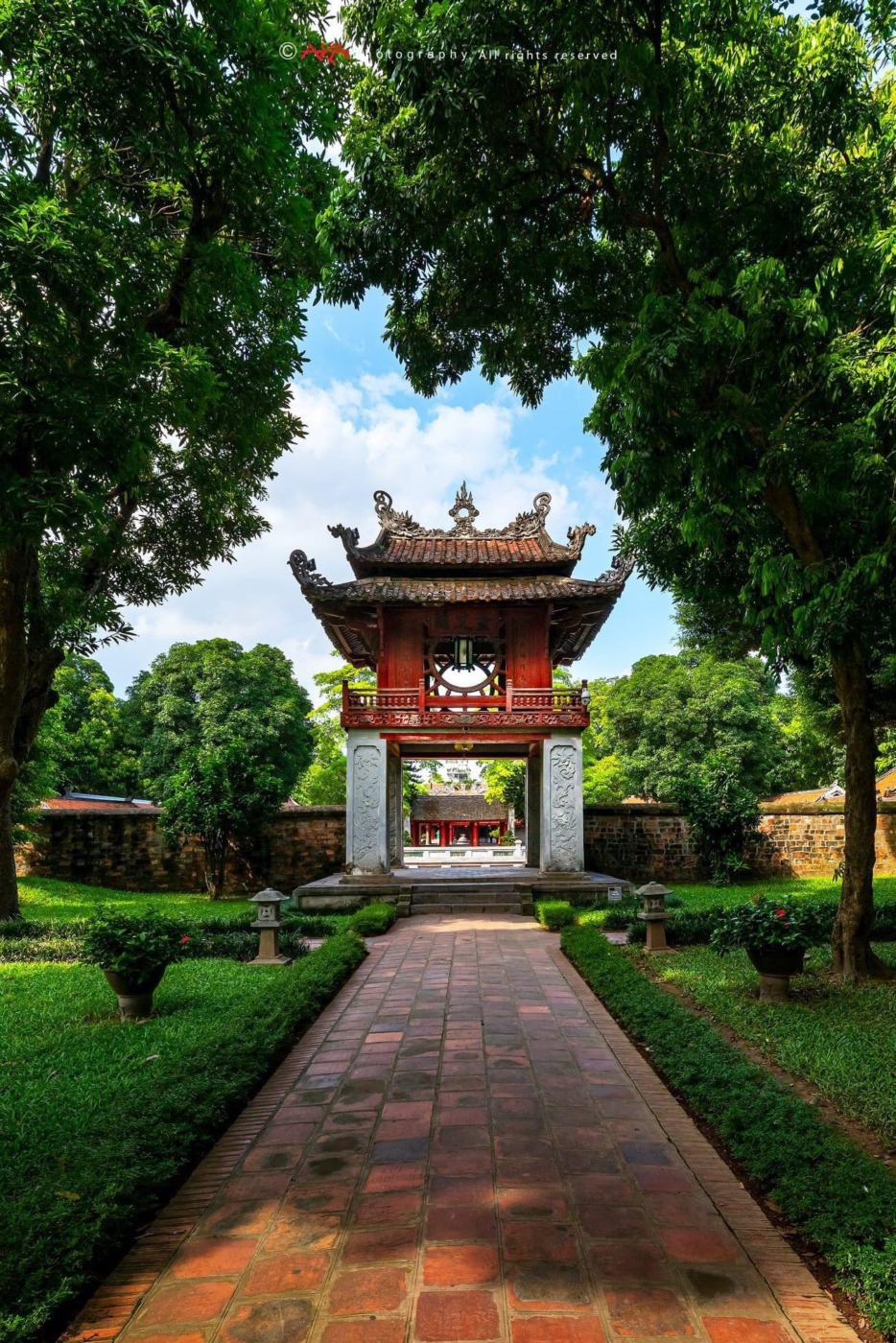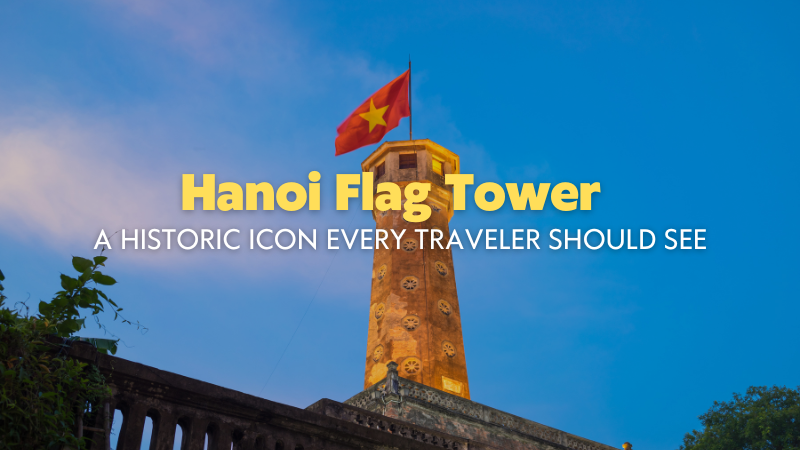For travelers exploring the capital, the Hanoi Flag Tower stands out as one of the city’s most enduring historical symbols. Built more than two centuries ago and surviving multiple wars, this landmark has become both a patriotic emblem and a must-visit attraction for anyone interested in Vietnam’s past. During your Hanoi journey, adding the Hanoi Flag Tower to your itinerary gives you a deeper look into the stories that shaped this 1,000-year-old city—something AFS Travel always recommends to culture-focused visitors.
The Significance of the Hanoi Flag Tower in Vietnamese History
Visiting the Hanoi Flag Tower is not simply about admiring an ancient structure. This tower has witnessed turning points in Vietnam’s struggle for independence, dramatic battles, and historical milestones that continue to define the nation today. Its imposing structure and proud national flag capture the spirit of Hanoi in a way few other landmarks can.

Where the Hanoi Flag Tower Is Located and How to Get There
Situated right in central Ba Dinh District, the Hanoi Flag Tower sits at 28A Điện Biên Phủ Street—just steps away from the Thang Long Imperial Citadel, the Ho Chi Minh Mausoleum, and the Presidential Palace. The location makes it extremely convenient for travelers who want to explore Hanoi’s political and cultural heart in one route.

Getting to the Hanoi Flag Tower from the Old Quarter
The Hanoi Old Quarter is only 1.6 kilometers away, meaning most visitors can reach the landmark within minutes. Because of its strategic location, AFS Travel usually recommends using a taxi or rideshare if you prefer comfort, especially during peak hours.
For budget-friendly travelers, public buses such as numbers 9, 32, or 41 stop right near the entrance. If you drive your own vehicle, parking is available at the Vietnam Military History Museum next door.
When Was the Hanoi Flag Tower Built? A Look Back in Time
The history of the Hanoi Flag Tower traces back to the early 19th century. Construction began in 1805, during the reign of Emperor Gia Long of the Nguyễn Dynasty, and was completed five years later. At that time, the tower formed part of the southern section of the Thang Long Imperial Citadel.
Survival Through War and Colonial Rule
During the French colonial period, much of the citadel complex was destroyed. However, the French army preserved the Hanoi Flag Tower and repurposed it as an observation post due to its advantageous height. It continued to serve as a lookout point during the Indochina War, offering panoramic views of the city and surrounding military terrain.
A Symbol of Independence
One of the tower’s most defining moments occurred in 1945 when the national flag was raised there following the success of the August Revolution. Later, on October 10, 1954, after the victory at Dien Bien Phu, the flag was raised again—marking Hanoi’s liberation. In 1989, the tower was officially recognized as a national historical monument. Today, it remains one of the most meaningful patriotic symbols in Hanoi.
Architectural Highlights of the Hanoi Flag Tower
Standing at 33 meters tall (not including the flagpole), the Hanoi Flag Tower features a three-tiered foundation and a main tower that narrows gracefully toward the top. Its upper chamber is octagonal and features eight arched windows pointing in all directions, designed to serve as lookout points for soldiers.
Inside, a narrow spiral staircase with 54 steps leads upward, although access is restricted for preservation reasons. From the outside, however, visitors can still admire the reddish brick structure, the national flag waving against the sky, and the surrounding courtyard of the Vietnam Military History Museum.

Essential Visitor Information for the Hanoi Flag Tower
If you’re planning your visit, here is everything you need to know for a smooth and enjoyable experience.
Opening Hours and Admission Fees
The Hanoi Flag Tower is open daily from 9:00 AM to 5:00 PM. Entrance is typically 40,000 VND, making it one of the most accessible historical attractions in the city. Most travelers spend around an hour exploring the tower and the surrounding museum grounds, though you can stay longer if you enjoy photography or history.
Best Time to Visit the Hanoi Flag Tower
AFS Travel recommends visiting between 9:30 AM and 10:30 AM, when the morning sun lights up the tower beautifully but temperatures remain comfortable. If you enjoy a quieter atmosphere, late afternoon is also a pleasant time to stroll around Ba Dinh District.
Visitor Guidelines
Because the Hanoi Flag Tower is part of a national heritage site, visitors are advised to follow several rules:
- Avoid wearing short skirts, short shorts, or sleeveless tops.
- Do not smoke or bring food into the area.
- Be respectful when taking photos around the Military History Museum nearby.
These simple guidelines ensure that the environment remains clean and respectful for all guests.
What to See Near the Hanoi Flag Tower
The Hanoi Flag Tower is surrounded by many of the city’s top cultural landmarks, making it ideal for a half-day walking tour. Nearby attractions include Hoan Kiem Lake, West Lake, Temple of Literature, One Pillar Pagoda, the Hanoi Opera House, and the Imperial Citadel of Thang Long. Visiting these sites together provides a comprehensive understanding of Hanoi’s history—from ancient dynasties to the modern era.
AFS Travel often organizes combined itineraries that include the Hanoi Flag Tower, the Ho Chi Minh Complex, and other important historical sites to help travelers explore the city efficiently.
>>> Book now: HANOI – NINH BINH – HA LONG 5N4Đ

Final Thoughts: Why the Hanoi Flag Tower Belongs on Your Itinerary
The Hanoi Flag Tower is more than just an architectural relic—it is a powerful symbol of Vietnam’s perseverance, identity, and national pride. Its location at the center of the old citadel grounds and its role during pivotal moments in Vietnamese history make it indispensable for anyone wanting to understand the story of Hanoi.
Whether you’re drawn to heritage, photography, or patriotic landmarks, this tower offers a meaningful experience that stays with you long after your trip ends. And as always, AFS Travel stands ready to help you plan the most inspiring routes through the capital so you can uncover every layer of its history.





















